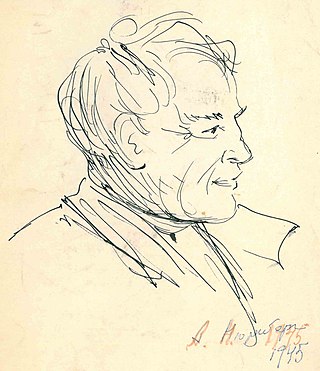
Tashkent or Toshkent, historically known as Chach, is the capital and largest city of Uzbekistan. It is the most populous city in Central Asia, with a population of 2,909,500 (2022). It is located in northeastern Uzbekistan, near the border with Kazakhstan. Tashkent comes from the Turkic tash and kent, literally translated as "Stone City" or "City of Stones".
Sanjar Guiess Umarov is a prominent Uzbek politician and businessman. He is the chairman of Sunshine Uzbekistan, the main party in opposition to president Islam Karimov's authoritarian rule. He was arrested in October 2005 for embezzlement—charges his supporters say are politically motivated—and was imprisoned until November 2009, when he was freed and allowed to move to the United States.

Setenay Özbek is a Turkish-born artist, writer, and documentary filmmaker. Özbek is of Ubykh descent.

Ural Tansykbaevich Tansykbayev was an Uzbek painter of Kazakh descent. He was named a People's Artist of the USSR and People's Artist of the Uzbek SSR in the category visual art.
Carlos Sayadyan, is an Armenian painter living in Armenia.

Amshey Markovich Nurenberg was a Ukrainian, Russian and Soviet painter, adherent of the School of Paris, graphic artist, art critic, and memoirist.
Alexander Alexandrovich Naumov was a Soviet, Russian painter, lived and worked in Saint Petersburg, member of the Saint Petersburg Union of Artists, regarded as a representative of the Leningrad school of painting, the most known for his works depicting Central Asia.
Chingiz Akhmarov was an Uzbek painter and Uzbekistan State Prize laureate.
Alexander Nikolaevich Volkov was an avant-garde Russian painter. Although his style was much influenced by Cubo-Futurism, it was officially declared formalist and counter-revolutionary, condemning him to obscurity. He was also an acclaimed poet.
Lekim Ibragimov is a Uzbekistani graphic artist, painter, professor and academician of the Arts Academy of Uzbekistan. He is an honorary member of the Russian Academy of Arts.

Igor Alekseevich Novikov, also Igor Alexejewitsch Nowikow, (Russian): Новиков, Игорь Алексеевич is a Swiss-Russian painter, art theorist, philosopher, artist and member of the Russian Academy of Arts. Igor Novikov belongs to one of the areas of postmodern art, Sots Art. He belongs to the generation of Moscovian Soviet Nonconformist Art painters who have been shaped by the demise of the Soviet Union.
Sergey Yurievich Ignatyev is an Uzbek artist and human rights defender, living in the United States. He is an official representative of the Association for Human Rights in Central Asia in the US.
Ivan Semyonovich Kazakov (Russian: Иван Семёнович Казаков; was a painter and graphic artist; residing in the Russian Empire and later the Uzbek Soviet Socialist Republic.

The Alisher Navoi State Museum of Literature of the Academy of Sciences of Uzbekistan is a scientific-cultural, educational establishment which mainly focuses on collecting and researching the historical materials and objects which are related to Uzbekistan's history. The museum plays a role in the cultural development of young generations in Uzbekistan and it keeps various documents, manuscripts from the Middle Ages.
Art Gallery of Uzbekistan is established in Tashkent city, after the Independence of Republic Uzbekistan, and became one of the most visited modern museums of local people in Uzbekistan.
The Museum of Health Care of Uzbekistan is in Uzbekistan. It was established in order to contribute information about the medicine and hygiene among the Uzbek people in an interesting way.

Aleksandr Vasilievich Nikolayev, also known as Usto Mumin, was a Soviet painter of Russian origin, who lived and worked in the Uzbek SSR.
Andrey Kimovich Esionov is a Russian painter and graphic artist, who paints portraits and cityscapes. He is academician of the Russian Academy of Arts, Honorary Academician of the Florentine Academy of Fine Arts and Drawing, a member of the Russian Artistic Union of Painters (1995), the Moscow Artists' Association of International Art Fund, and the Union of Russian Artists.

Margarita Ivanovna Filanovich is a Soviet historian, archaeologist, and leader of a Tashkent archaeological expedition.
Valery Alexandrovich Volkov was a Soviet-Russian painter and art historian who lived and worked in Central Asia and in Russia. Intercultural experiences and knowledge gleaned from the art history of two different cultures was reflected in a distinctive fusion of influences in his paintings. His painting style is associated with abstract expressionism and merges a sensual world of colour of the Orient and the gestural brush technique of European modernism.








